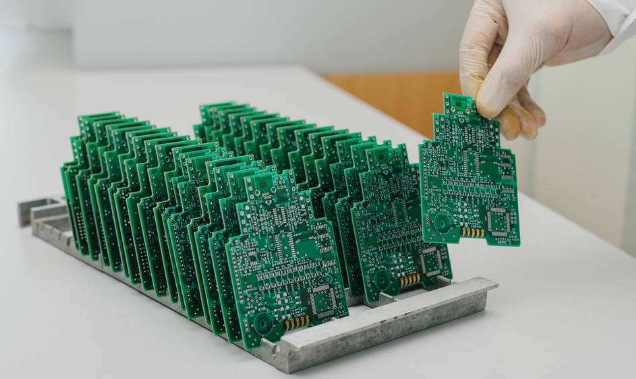A. The use requirements and precautions of some tools for PCBA processing
We often use some tools in the process of PCBA processing, so let’s talk about the requirements for the use of these tools and related precautions
Cutting pliers-some tool usage requirements and precautions for PCBA processing
1. Cutting pliers
1. The cutting edge of the cutting pliers should be sharp at the foot cutting station, and regular inspections should be carried out (confirm by cutting light or paper cutting);
2. When the cutting pliers are used for twisting feet such as radiators, the front end of the cutting pliers should be blunt.
2. Electric soldering iron
(1) Temperature range
The temperature of the constant temperature soldering iron is controlled at 360+/-20 degree Celsius

(2) Nominal power 60W (with ESD protection)
1. Soldering iron with constant temperature below 60W (including 60W) for tin inspection and fixed tinning;
2. Use hot air to remove large-scale, high-density pin ICs: Circulate heating along the edge of the IC pins until the IC can just be moved. It is advisable to prevent overheating, and pay attention to thermal insulation protection for the surrounding components of the IC; note: repair, rework and repair A constant temperature soldering iron must be used for the parts.
3. Wind approved, electric approved
1. Wind batch, suitable for screw assembly with medium torque requirements;
2. Electric batch, suitable for screw assembly with small torque (generally less than 4Kg2cm) and strict torque requirements;
3. After the screw is in the bottom when assembling, the electric batch should be stopped, and the screw should not be impacted for a long time;
4. The torque of self-tapping screws is not only affected by the torque of the wind screw (or electric screw) itself, but also by the size of the fit between the screw and the screw hole;
B. Common methods for analyzing PCBA board failures
Modern electronic assembly technology is mainly developed with PCBA as the object. Therefore, the research on reliability of electronic assembly technology is also mainly developed with the failure phenomenon that occurs on PCBA. The failure phenomena of PCBA can be divided into two categories: those that occur during the production process and those that occur during the user's service.
(1) Failure phenomena of PCBA (internal or surface) during the manufacturing process: such as plate explosion, delamination, surface excess, ion migration and chemical corrosion (rust), etc.
(2) Various failure modes and failure manifestations on the PCBA during the user's service: such as virtual welding, solder joint brittle fracture, deterioration of microstructure in solder joints, and reliability degradation.
The purpose of failure analysis
Failure analysis is the process of determining the cause of the failure, collecting and analyzing data, and summarizing and eliminating the failure mechanism that caused the failure of a particular device or system.
The main purpose of failure analysis is:
▪ Find out the cause of the failure;
▪ Tracing the adverse factors in process design, manufacturing process, and user service;
▪ Propose corrective measures to prevent the recurrence of failures.
Through the accumulated results of failure analysis, we will continuously improve the process design, optimize the product manufacturing process, and improve the usability of the product, so as to achieve the goal of comprehensively improving the reliability of the product.
PCBA failure rate curve
1. The failure rate curve of PCBA products includes the following three levels, namely:
▪ Component failure rate curve: Through forced aging of components before leaving the factory, the failure rate of components during the user's service period can be effectively reduced.
▪ Component supply life curve: It describes the service life of the component to the user, and it has a significant impact on the reliability of the constituted system.
▪ PCBA assembly failure rate curve: it is affected by three parts: SMD incoming material life, SMD assembly life and solder joint life. At this time, the life of PCBA basically depends on the life of solder joints. Therefore, ensuring the welding quality of each solder joint is a key link to ensure the high reliability of the system.
PCBA product failure rate curve
2. PCBA typical instantaneous failure rate curve
The typical instantaneous failure rate of PCBA is abbreviated as PCBA typical failure rate. The instantaneous failure rate is the probability that the PCBA will fail in a unit of time after working to time t. The typical instantaneous failure rate curve of PCBA consists of three areas: premature aging zone, product service zone and aging zone
The levels, principles and methods of PCBA failure analysis
1. Levels of failure analysis
In the production and application of electronic products, the control and analysis of PCBA and solder joint failures are basically the same as the reliability control and analysis methods of other systems, as shown in Figure 3.
2. The principle of failure analysis-the basis of mechanism reasoning
▪ On-site information;
▪ Retest (failure mode confirmation) result analysis;
▪ The failure mechanism of the specific process and structure of the object;
▪ The failure mechanism related to the specific environment;
▪ The relationship between failure mode and failure mechanism;
▪ Long-term accumulation of relevant knowledge and experience.
3. Failure analysis method
For the methods used in PCBA failure analysis, some experts in the industry have summarized a good analysis model.